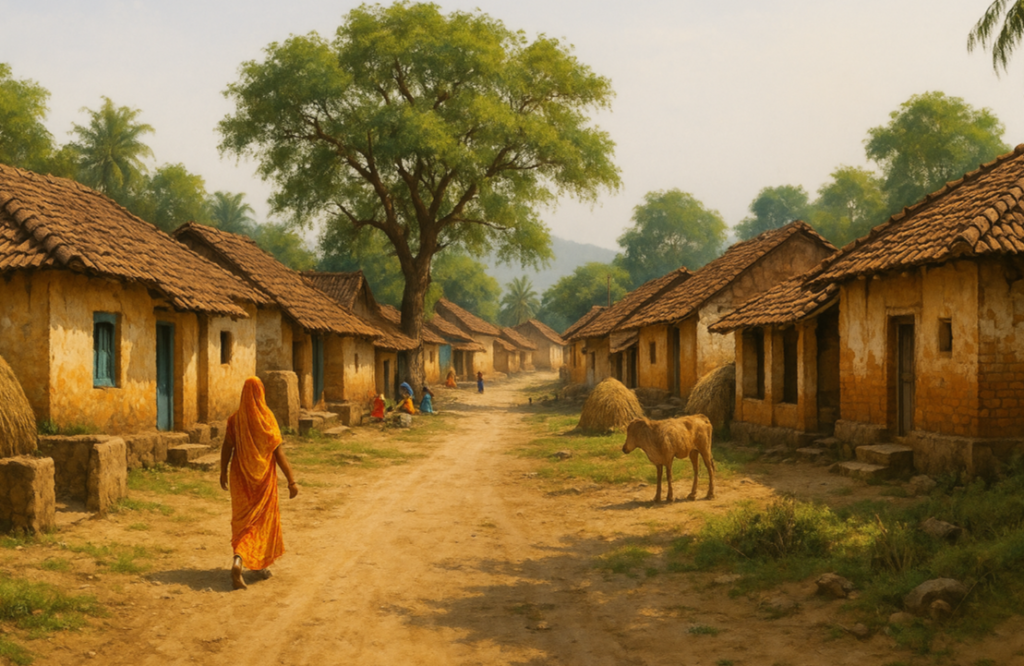Rural areas and villages form the backbone of many countries, especially in developing nations like Pakistan, India, and Bangladesh. Despite being rich in natural resources, cultural heritage, and traditional values, these regions often suffer from neglect and lack of infrastructure. Understanding their basic needs and identifying practical ways to resolve their problems is crucial for sustainable national development and balanced socio-economic progress. In this article we will discuss about some basic needs and necessities of rural areas of Indian Sub-continent.
Rural development is not just a moral responsibility; it is an economic necessity. Bridging the urban-rural divide ensures national stability, food security, and inclusive growth. Sustainable development of villages requires collective efforts from the government, civil society, and local communities.

Basic Needs of Rural Localities
Here are some of the basic needs and necessities of rural areas and villages
1. Clean Water and Sanitation
Access to clean drinking water and proper sanitation is a fundamental human right. However, in many villages, people still rely on contaminated water sources, leading to diseases like cholera, diarrhea, and typhoid. Lack of toilets and sewerage systems contributes to open defecation, further deteriorating health conditions.
2. Healthcare Facilities
Rural populations often suffer due to inadequate healthcare services. Many villages lack proper clinics, trained medical staff, emergency transport, and access to essential medicines. This results in high mortality rates, maternal complications, and untreated chronic diseases.
3. Education and Literacy
Quality education remains a distant dream for many rural children. Insufficient schools, lack of trained teachers, poor infrastructure, and long travel distances prevent many from pursuing basic education. Girls, in particular, suffer more due to social and cultural barriers.
4. Employment Opportunities
Agriculture remains the primary source of livelihood in rural areas, but it frequently fails to provide a stable or sufficient income due to its seasonal nature, unpredictable weather conditions, and the continued use of outdated farming methods. As a result, many rural families struggle financially throughout the year. To address this issue, there is an urgent need to introduce diversified employment opportunities such as small-scale industries, handicrafts, vocational training, and service-based jobs to ensure economic stability.
5. Electricity and Connectivity
Many villages either lack access to electricity altogether or experience frequent and prolonged power outages, which severely disrupt daily life and economic activities. Additionally, limited internet and mobile network coverage contribute to a growing digital divide between urban and rural populations. This lack of connectivity prevents rural communities from accessing educational resources, digital healthcare, and essential online services.
6. Transportation and Roads as Basic need in rural areas
Poor road infrastructure and the lack of reliable transportation systems significantly hinder mobility in rural areas. This affects people’s ability to reach markets to sell their produce, access healthcare facilities for timely treatment, and send children to school regularly. In emergency situations such as medical crises or natural disasters, bad roads can delay critical help, costing precious lives and resources. Improving rural roads is essential for overall development and safety.
7. Housing and Shelter most
Many rural families are forced to live in temporary or semi-permanent shelters made from mud, bamboo, or other fragile materials. These structures often fail to provide adequate protection against harsh weather conditions such as heavy rain, strong winds, and extreme heat. During natural disasters like floods or earthquakes, such shelters collapse easily, putting lives at risk and causing repeated displacement. There is an urgent need to introduce affordable, durable, and disaster-resilient housing solutions that can ensure safety, security, and long-term stability for rural communities across all seasons.
Common Problems in Rural areas of Indian Sub-Continent
Poverty and Unemployment
Illiteracy and Lack of Awareness
Gender Disparities
Limited Political Representation
Dependency on Traditional Farming
Corruption and Mismanagement in Rural Development Programs
Ways to Address the Problems, Needs and Necessities of Rural Areas
- Government-Led Infrastructure Development
Governments should prioritize rural development by investing in roads, electricity, water supply, and healthcare centers. Effective implementation of rural development schemes is essential. - Promotion of Rural Education
Building more schools, recruiting trained teachers, and offering incentives such as free meals, uniforms, and scholarships can improve literacy. Adult education programs should also be launched. - Empowering Women and Girls
Educating girls and empowering women through self-help groups (SHGs), vocational training, and microfinance can uplift entire communities. - Healthcare Access Improvement
Mobile health units, telemedicine services, and training local health workers (lady health workers or community paramedics) can bridge the healthcare gap. - Agricultural Modernization
Providing access to modern tools, seeds, irrigation, and market facilities can make agriculture more profitable. Crop diversification and animal husbandry should also be encouraged. - Job Creation and Skill Development
Rural industries like handicrafts, textiles, food processing, and eco-tourism should be promoted. Government and NGOs can establish training centers for youth skill development. - Digital Connectivity and E-Governance
Expanding internet access in villages can help people benefit from online education, digital banking, telemedicine, and government services. Rural digital literacy programs are essential. - Community Participation and Local Governance
Strengthening local governments (Union Councils, Panchayats) and encouraging community participation ensures that development reflects actual needs. Transparency and accountability should be ensured.